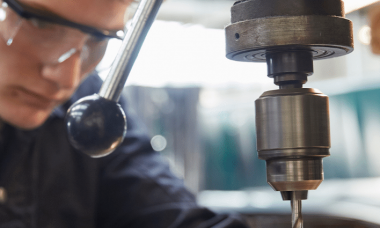Two trends to be celebrated in apprenticeships
Apprenticeships and traineeships were acknowledged by both sides in the recent federal election campaign as critical for Australia. With the promise of providing skilled job opportunities and meeting skills demand, their important role in our future is undisputed.
Despite continued challenges with things like recruitment of new apprentices and completion rates, which raise questions over the attractiveness of aspects of apprenticeships, the last few years have seen good results for the sector flowing through into great statistics releases.
Here are two trends backed by statistics that show apprenticeships are going strong.
Firstly, the National Centre for Vocational Education Research's (NCVER) latest report on apprenticeship and traineeship numbers, released on 25 March 2022, showed that commencements increased by 88.1% in the 12 months ending 30 September 2021.
The increase in commencements was broad-based, including a 97% increase in traineeships (non-trade), as well as a 78.2% increase in apprenticeships (trade). There was also a pleasing 101.2% increase in female apprentices and trainees when it came to commencements.
The boom in commencements increased the total number of those in training to 352 020 as at 30 September 2021, an increase of 33.2% when compared with 30 September 2020.
Stand-out trade occupation increases were in engineering, ICT and science technicians (up 247.7%) and skilled animal and horticultural workers (up 102.1%). Big non-trade increases were professionals (331.8%), managers (194.1%) and clerical and administrative (164.7%).
Secondly, the NCVER Apprentice and trainee outcomes 2021 report, which provides a summary of outcomes for apprentices and trainees completed during 2020, found that there were increases in job outcomes for both apprentices and trainees.
The report found that 94% of trade apprenticeships completers were employed after training, marking a 2.5% rise on 2019 figures. Meanwhile, 88.4% of non-trade completers were employed after their training, up 3.5% when compared with 2019.
There was also significant satisfaction. A total of 94% of trade completers and 91.3% of non-trade completers were satisfied with skills learned on the job, while 86.7% of trade completers and 91% of non-trade completers were satisfied with their off-the-job training overall.
Ai Group says the data indicates the Boosting Apprenticeship Commencements (BAC) program, which subsidises apprentice and trainee wages by 50% for the first 12 months (up to $7000 per quarter) was positively impacting numbers before the change of government.
The data also indicates that, should apprentices and trainees move through their training and not end up as a non-completion statistic early on, they are likely to be largely satisfied with the training they have received and the work outcomes they receive as a result.
This is something to be thankful for - and build on - as a sector into the future.
Interested in finding out how ReadyTech can improve apprentice management and support with technology? Learn more here.






